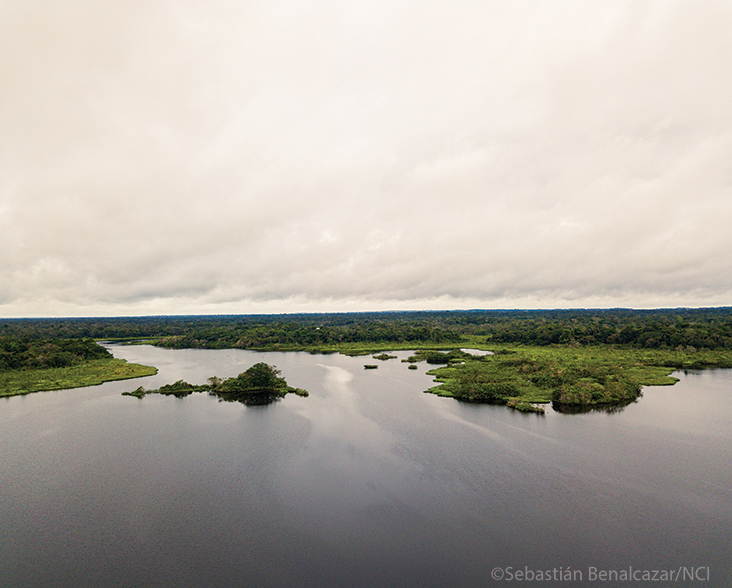Amazonian Manatee
Species Data
Class: Mammalia
Order: Sirenia
Family: Trichechidae
Scientific Name: Trichechus inunguis
IUCN Red List status: Vulnerable
Description
The smallest of the world’s three sirenians — manatees, dugongs, and sea cows — the aquatic Amazonian Manatee has a similar fusiform body shape, rounded tail and small head to the other two manatee species (African and West Indian) but is distinguished by its smaller dark grey to blackish body that usually has a white or pinkish patch or sometimes several markings on the ventral side, smooth skin, proportionally longer flippers that lack nails, a longer and narrower rostrum, and smaller teeth. The body is covered with fine hairs, and the upper and lower lips have thick bristles. Adults measure up to 2.75 m in length and weigh up to 420 kg.
Behaviour
Found only in freshwater, the Amazonian Manatee is migratory, moving into seasonally flooded areas such as floodplain forests during the high-water season and back into deep lakes and main river channels during the low-water season.
This herbivorous mammal is active day and night, feeding between 6-8 hours each day, usually for 30-90 minutes at a time, on over 49 species of aquatic and semi-aquatic plants. The diversity of plants making up their diet varies depending on the low and high-water periods of Amazonian rivers. Aquatic plants are more abundant during high-water periods when they can be more selective feeders, preferring emergent plants like grasses, especially Paspalum repens, but also feed on floating plants such as Water Hyacinth and less often on submerged plants like Utricularia foliosa. Emergent plants are less abundant in the dry season when the diversity of plants consumed decreases. When food becomes scarce, they may not eat for long periods, relying on their low metabolic rate and fat reserves.
A gregarious species, they are usually found in herds of between 4-8 individuals, although they once occurred in much larger groups. Copulation and births occur during the onset of the high-water season when food is plentiful. Females mate with several males, which gather in mating herds for a position next to the female. A single calf is born after a gestation of about 12 months and remains dependent on the mother for around two years. This species is estimated to live for around 60 years in the wild.


Habitat
The Amazonian Manatee is endemic to the Amazon Basin and inhabits most of the main Amazonian rivers and tributaries in Brazil, Colombia, Ecuador and Peru. Habitat use varies according to seasonal flooding. When water levels are low, they are restricted to permanent lakes and rivers up as far as rapids and waterfalls allow, but in the high-water season, they range widely through lakes, rivers, wetlands, flooded forests such as black and clearwater igapós and whitewater várzeas.
Threats and Conservation
Illegal hunting for meat remains the main threat to the Amazonian Manatee throughout its range. Hunting persists even in protected areas. Conservation measures include monitoring hunting within protected areas, offering alternative livelihoods and establishing awareness and education programs where hunting pressure is highest.
Entanglement in fishing nets is a major cause of calf mortality and orphaned calves, and orphaned calves that do not drown may be sold as pets. Droughts caused by climate change may lead to increased entrapment of Amazonian Manatees and easier hunting.
Habitat loss, alteration, degradation and fragmentation also threaten this species. Logging in Peru has clogged lakes and blocked the seasonal migration of Amazonian Manatees, while construction of dams in Brazil alters their habitat. Pollution by mercury from mining activities, fertilizers and pesticides from agriculture and oil spills from oil exploration contaminate aquatic habitats and are absorbed by the plants Manatees eat.
Increasing boat traffic is another threat. The Amazonian Manatee is sensitive to noise from boat traffic, which can affect their behaviour, especially where traffic is heavy around the city of Belém in Brazil and the mouth of the Amazon.
